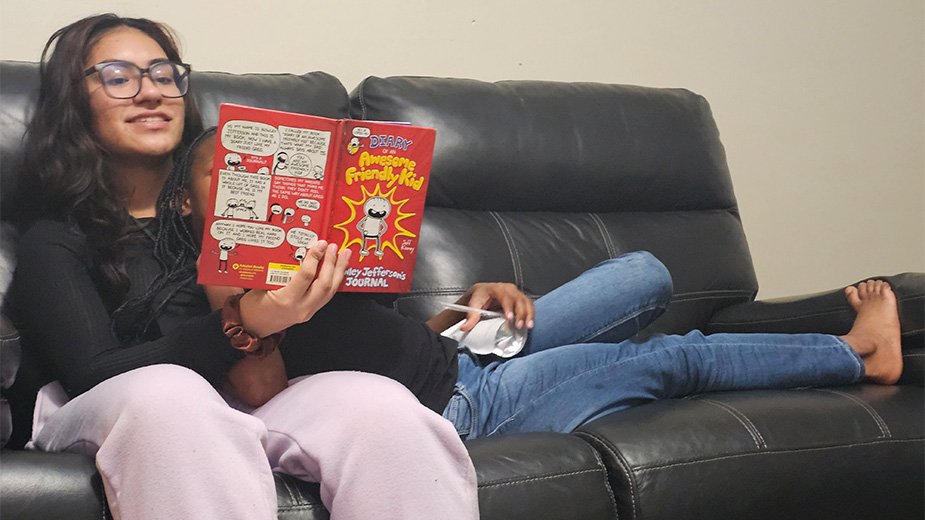‘Buy Local’ Campaigns Work to Boost Sales
YOUNGSTOWN,, Ohio — On May 2, Sharon, Pa., will celebrate Spring Fling. Launched last year by Greater Sharon Associates, downtown merchants and businesses will take the spotlight during a day that features entertainment and giveaways.
“It gives yet another reason for shoppers to come downtown,” says Laura Ackley, general manager of Donna’s Diner and the Buhl Mansion Guesthouse & Spa, both part of Winner Hospitality Group. “The only way small businesses survive is if we band together and work together to promote ourselves. We can’t compete with the multimillion – and sometimes multibillion-dollar – marketing budgets” that much-larger chain stores command.
Spring Fling is a spinoff of Small Business Saturday – the day after Black Friday – that downtown Sharon merchants have observed since 2012.
Their efforts are but one example of those here and around the country by locally owned businesses to take on out-of-town competition.
Keeping buy-local/shop-local campaigns focused on businesses that really are local and ensuring they’re inclusive are among the keys to their success, an organizer of such efforts says.
Says Jeff Milchen, co-director and co-founder of the American Independent Business Alliance, “We’ve seen more and more buy-local campaigns over the years.”
The American Independent Business Alliance is aware of 110 buy-local campaigns that Milchen describes as “serious,” and the organization supports about 85. Another 2,000 or so have yet to affiliate “but at any given time there are probably at least a couple hundred underway,” he estimates.
According to a survey by the Institute for Local Self-Reliance, in 2014, independent businesses in communities that ran buy-local campaigns coordinated by organizations such as Milchen’s experienced a 9.3% increase in sales. Communities that did not reported only a 4.9% increase.
The greatest challenge in several business sectors, especially retail, is the rise of online business, Milchen says. Amazon was a “nonentity” when he started organizing buy-local campaigns, “so that clearly is a huge challenge now” for sectors that include retail and insurance, he says. More recently, Amazon has entered more services by becoming a portal for providers such as painters or carpenters taking a commission when those services are booked though Amazon.
Among the characteristics of successful buy-local campaigns is a focus on genuinely locally owned and operated businesses, Milchen says, not the nominal locally owned and operated.
“We’ve seen quite a few campaigns started by governments or local chambers of commerce that represent a broad range of businesses,” he says, which allow the inclusion of publicly traded corporations.
Such sponsors “often simply choose to define local as if ownership was inconsequential,” he remarks. “Those campaigns have a pretty dismal record because when you put out a campaign talking about buying local and people see Home Depot or McDonald’s logos on your website, they’re in most cases going to react pretty cynically.”
Grassroots engagement is another key, with active buy-in and participation by business owners who develop a collective logo, for example, and use it on their websites and in their marketing. They can be “effective spokespeople for the cause,” he says, for how buying local benefits the business owners, the consumers and the community.
In many cases, campaigns that lack a “sufficient level of sophistication” has resulted in less-than-successful results, he says. Milchen has seen hundreds of communities throw up a logo that features some variation of a shopping bag with the phrase “Shop local” or “Buy local.” They expect that such a message, if repeated sufficiently, influences consumer behavior.
Such iconography overlooks a key aspect of buying local – ensuring that the campaign, including the logo, is inclusive of businesses across several sectors, he says. Retail accounts for only 20% of the businesses in a community, while companies that provide other forms of service make up more than half.
“A shopping bag logo may appeal to retailers, probably not so much to service providers and restaurateurs and farmers and artisans,” he points outs. “Having that more inclusive messaging and engaging is more characteristic of the more successful campaigns.”
Milchen points to several benefits of using local vendors. The assumption – driven by marketing – that consumers will always go for the lower price from the big-box retailer or online is usually true for staple commodities. Not always, however.
“Most successful independent businesses, particularly in the retail sectors, are part of national buying cooperatives that allow them to be highly competitive on price, whether that’s hardware, groceries or electronics,” he says. “And their expertise often can ultimately save people money as well as time by helping them make better decisions.
“A lot of it is about the quality of the experience as well,” he continues. “We hope in most cases that people are having more personal interactions when they’re doing business,” such as encountering sales staff in neighborhoods, something more likely when residents shop at a neighborhood store than a large shopping mall.
Pictured: Beader’s Utopia, operated by Sara McCauley, is one of the many stores in Sharon, Pa., participating in Spring Fling.
Copyright 2024 The Business Journal, Youngstown, Ohio.



